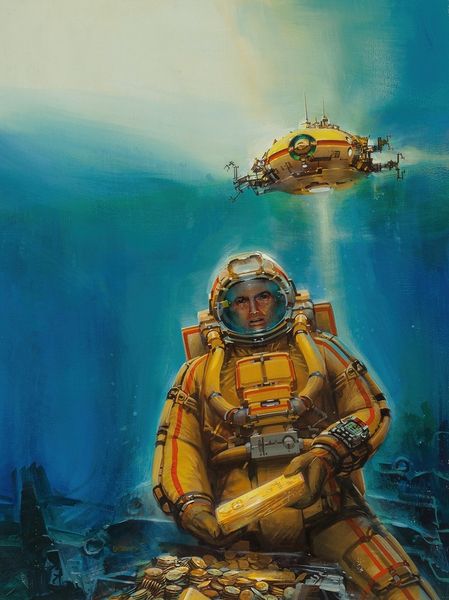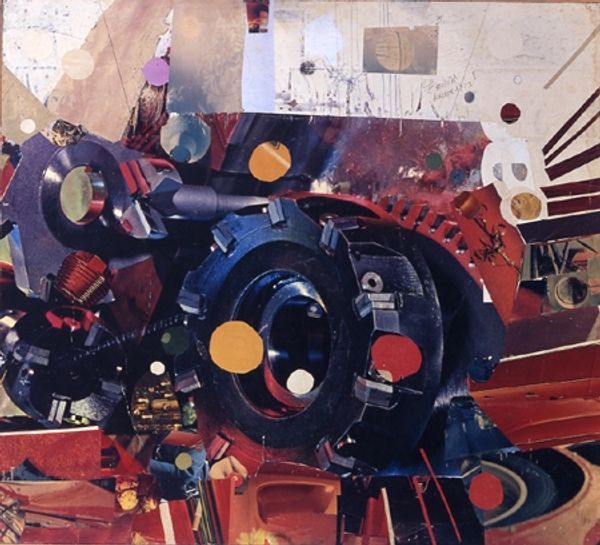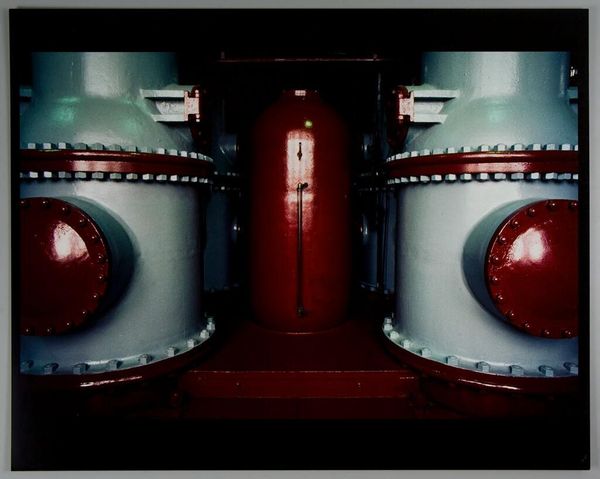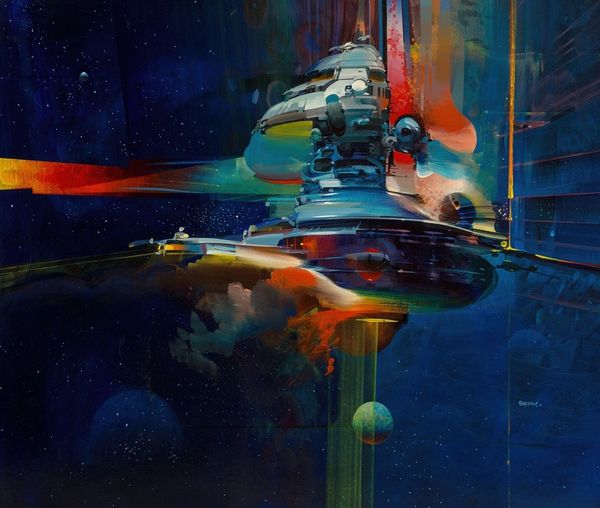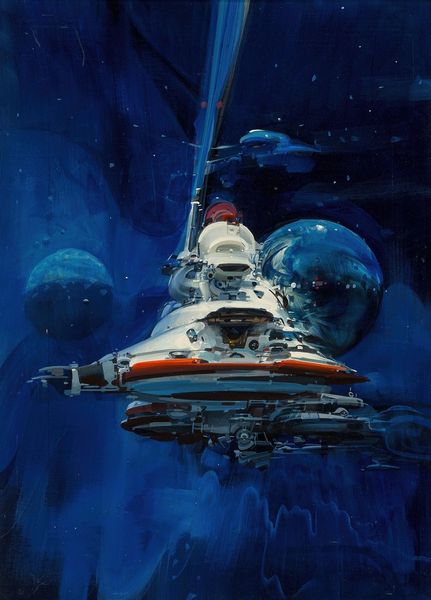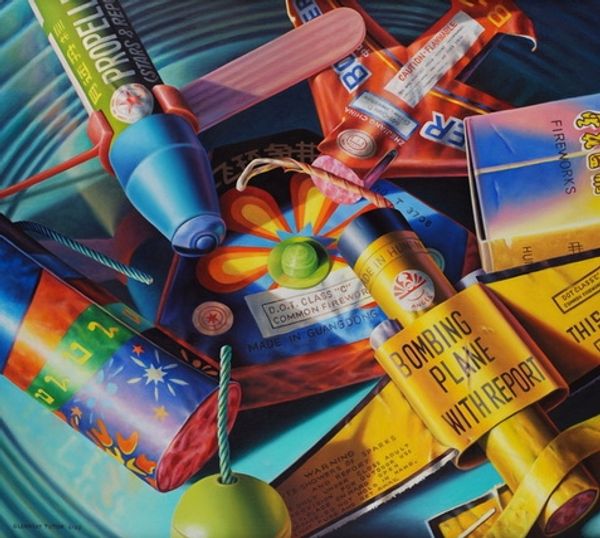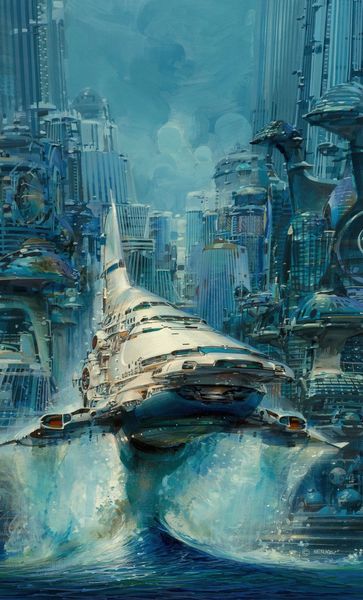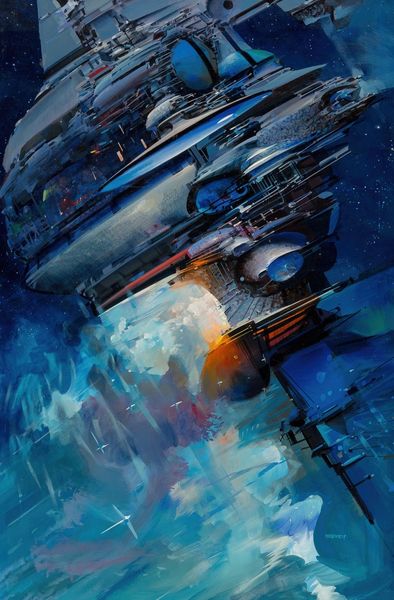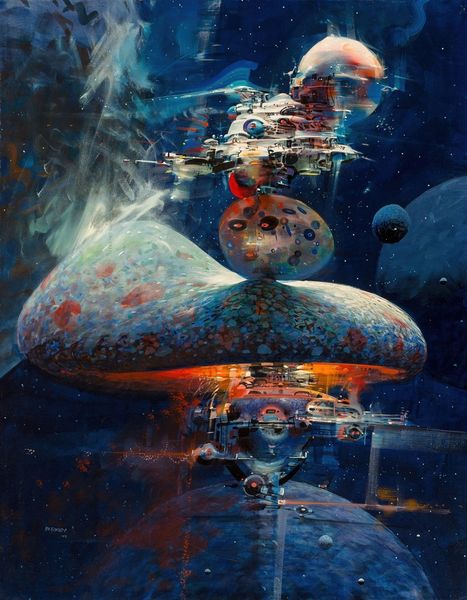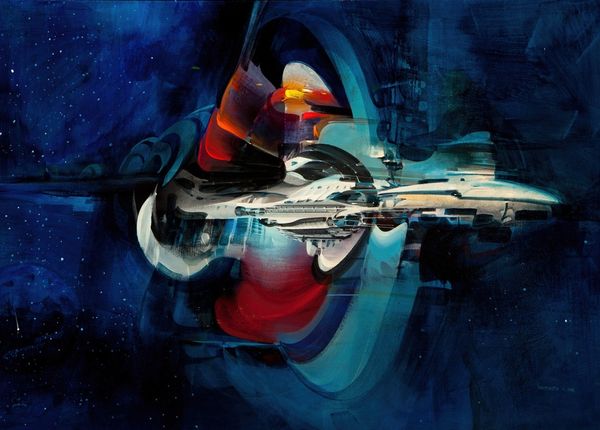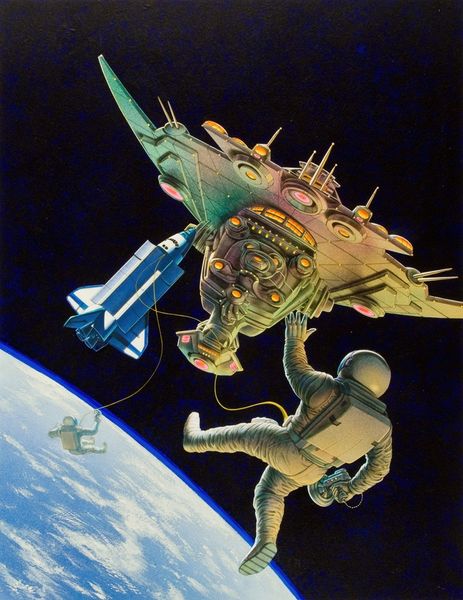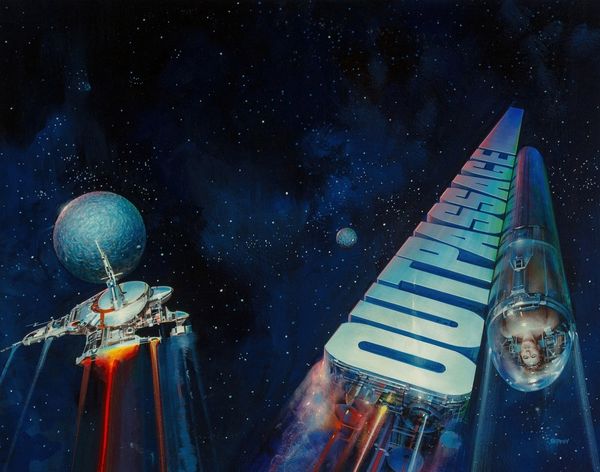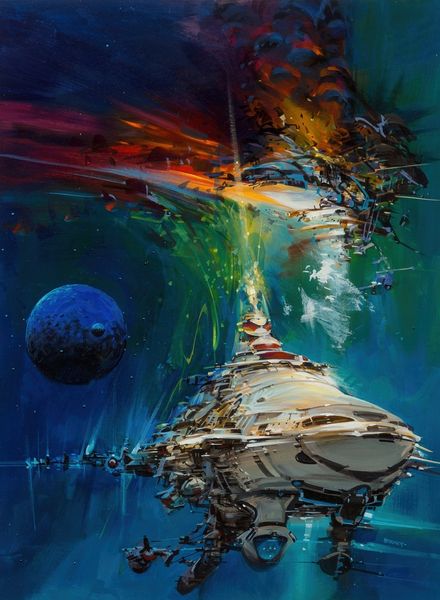
Copyright: Modern Artists: Artvee
Editor: Here we have John Berkey's cover art for the paperback edition of "Cross the Stars," created in 1985 using acrylics. There's this interesting tension between the cold, metallic structures and the warmth of the pilot's face. What narratives do you see emerging in this piece? Curator: I see a dialogue about the future of humanity. Berkey created this during a period where technology promised liberation, yet also stoked anxieties about dehumanization, especially through space exploration. Consider the gendering of these pursuits. Space, and technological advancement have historically been masculine-coded endeavors. What does the inclusion of a man within that visual language tell us? Editor: So you are saying the portrait seems almost like a stand-in for broader anxieties surrounding technology? Curator: Exactly. Notice how the mechanical elements seem to engulf the human subject. There’s a visual power struggle enacted through composition. Consider, also, the period. This image emerged during a Reagan era push toward technological solutions, and a parallel growth of dystopian narratives in film and literature questioning this reliance on the "machine." Is this subject powerful, or overpowered? Editor: I didn’t really think of it in that context. It is also fascinating to think of "progress" as something potentially imposing. It is quite haunting when you consider the social implications. Curator: Indeed. And isn't that the ongoing conversation that all portraits offer? The individual versus their society, their aspirations versus limitations? Editor: Absolutely. It's made me rethink the piece entirely, especially in how we discuss technology even today. Curator: That's the point. Art from the past can always reflect back on contemporary anxieties if we let it.
Comments
No comments
Be the first to comment and join the conversation on the ultimate creative platform.
